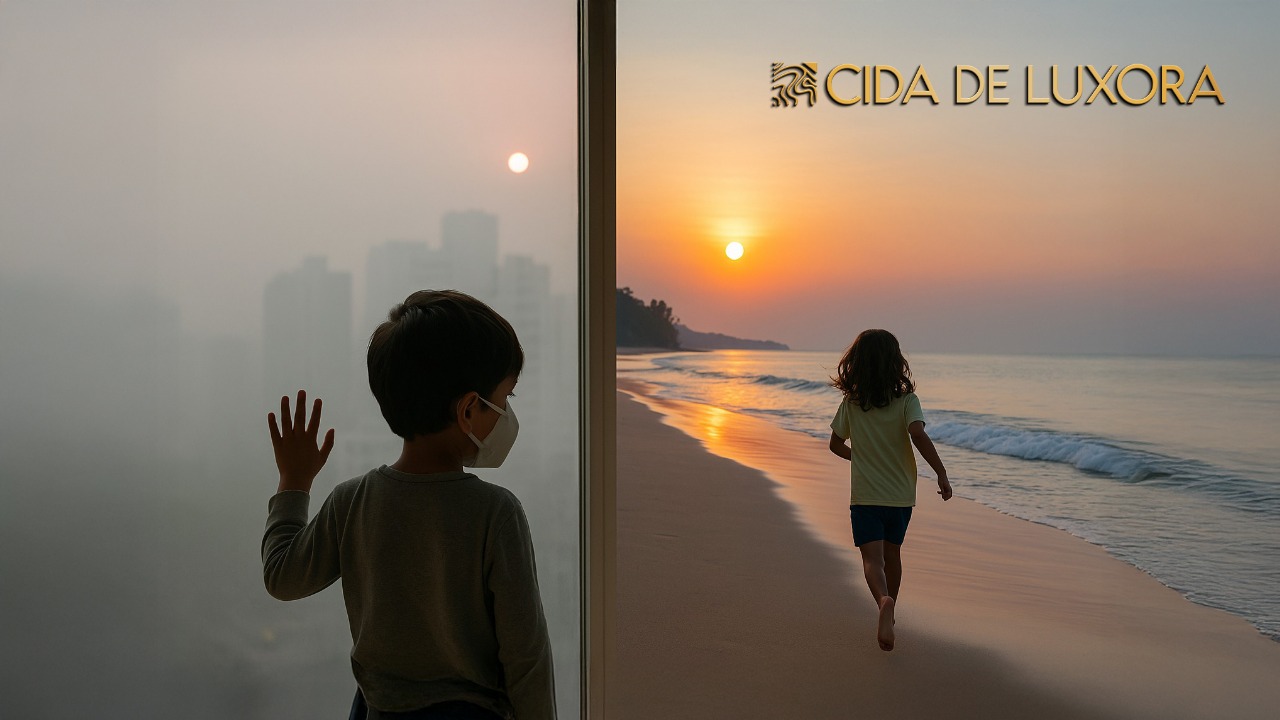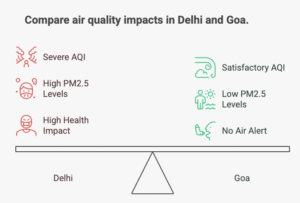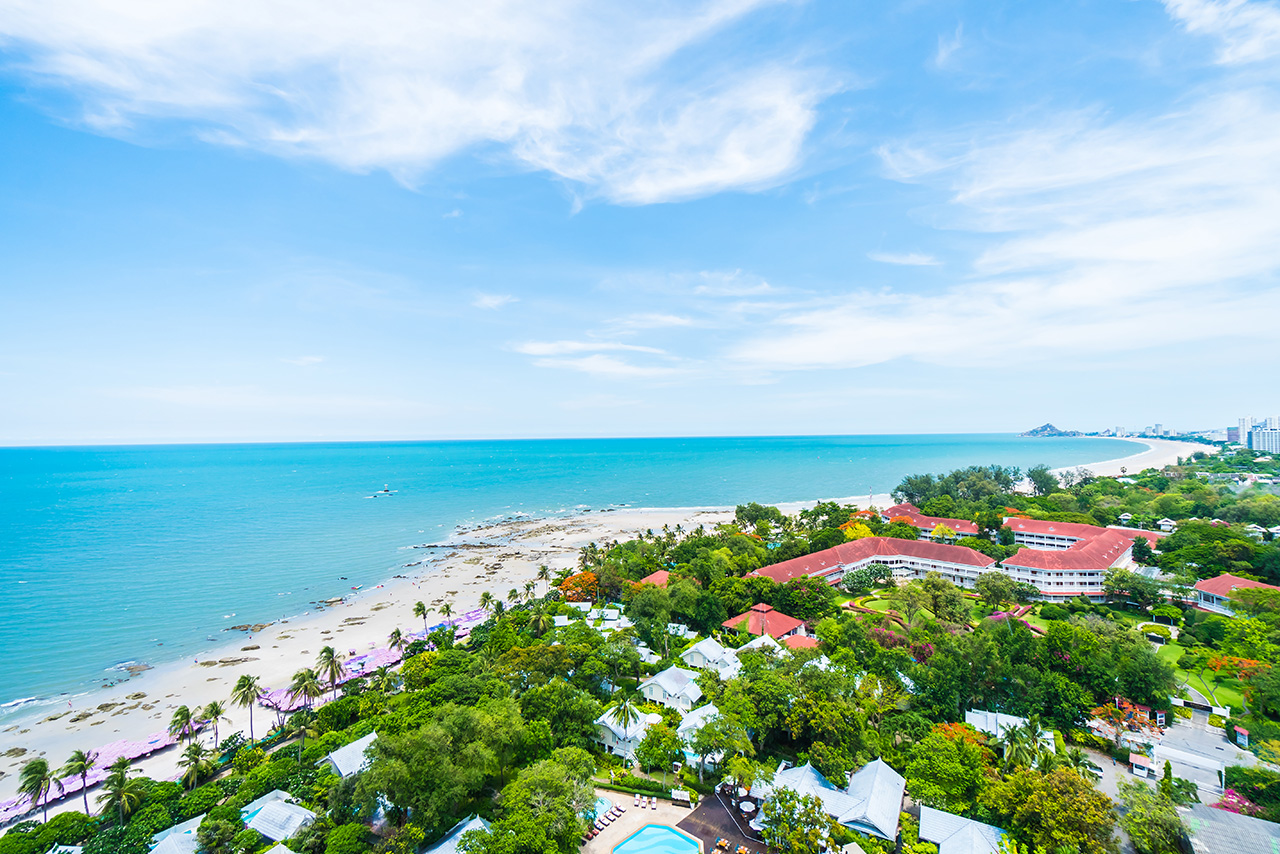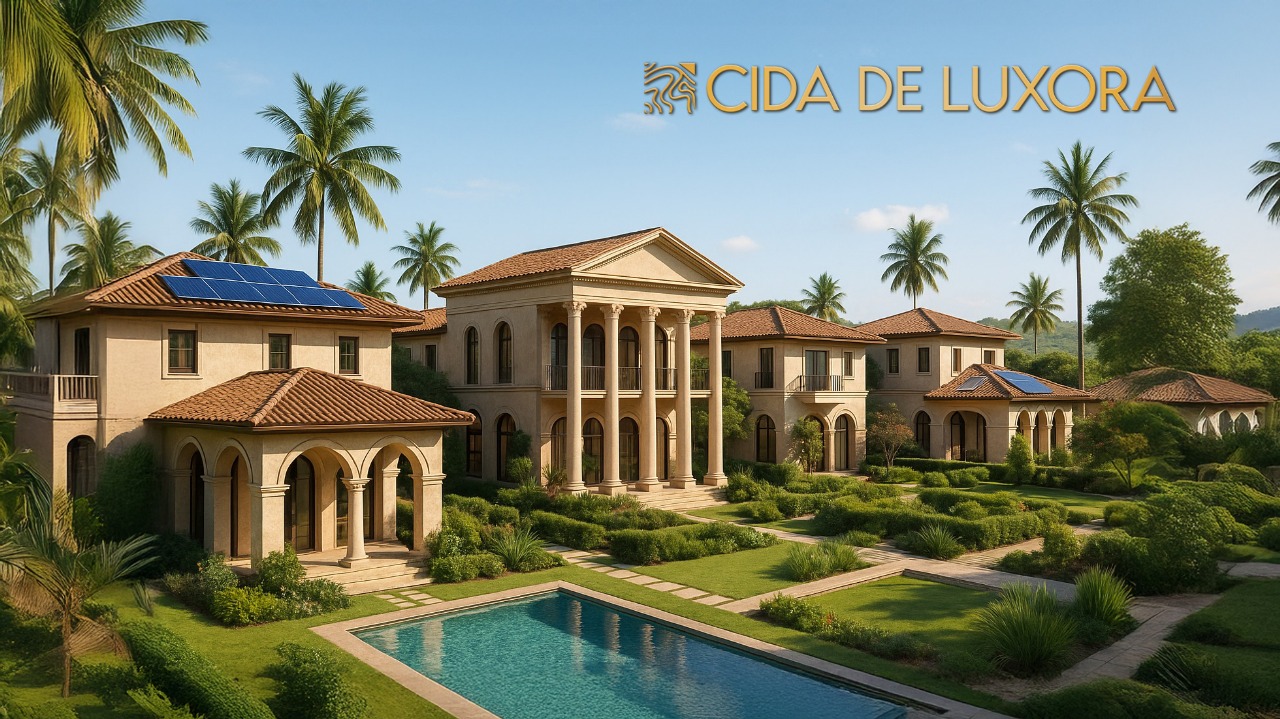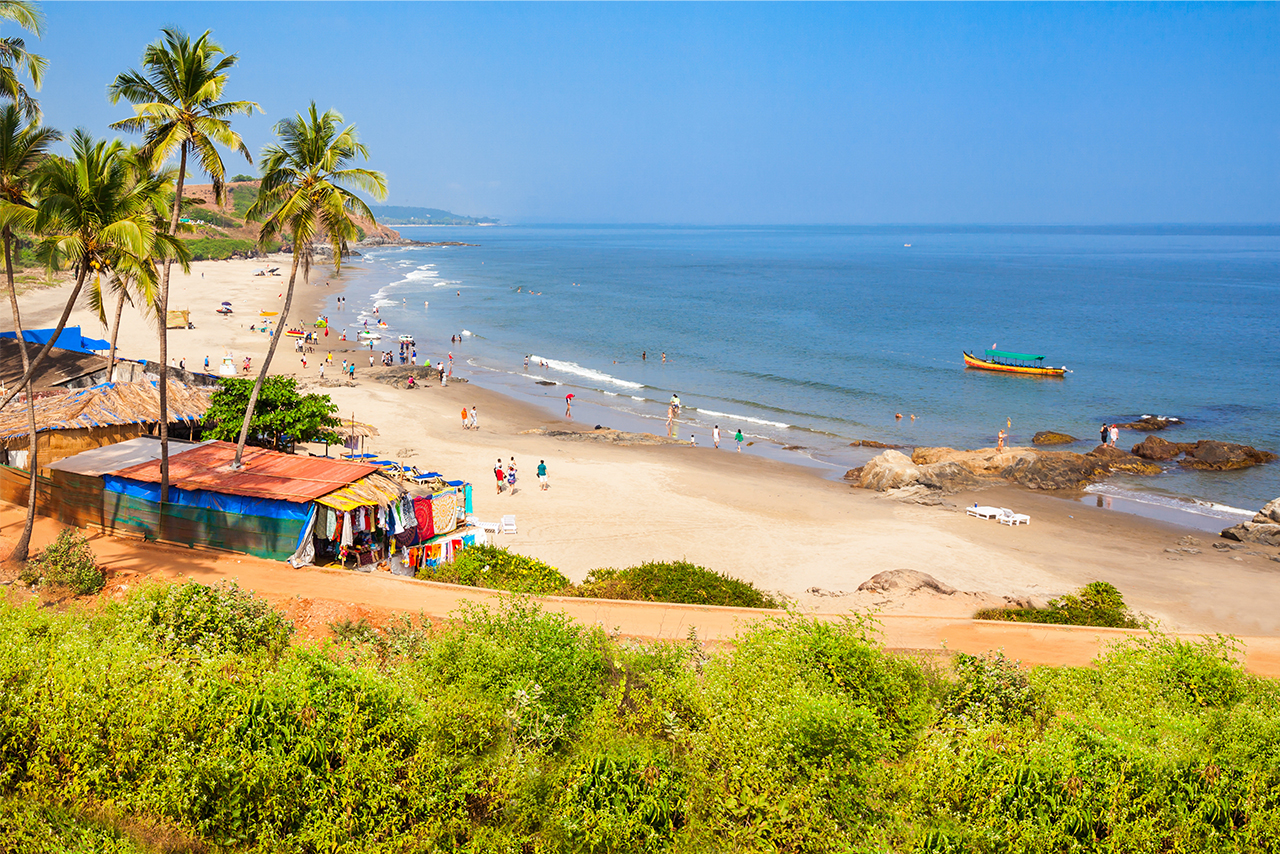Table of Contents
ToggleAfter the Smoke Clears: Why It’s Time to Invest in Maha Goa, Not Struggle in Delhi’s Post-Diwali Smog
“Papa, why is the sky grey again?”
A seven-year-old asks this the morning after Diwali. Outside, the air tastes like burnt paper and the horizon has disappeared behind a sheet of smoke.
The same festival that celebrates light has turned Delhi’s skyline into darkness. Hospitals brace for a surge in respiratory emergencies. Schools shut down. Children’s laughter gets replaced by coughs muffled behind N95 masks.
And yet — 1,500 kilometers away, on the shores of Sustainable Luxury in Maha-Goa families wake up to sea breeze, sunlight, and silence. No smog alerts. No stinging eyes. Just the aroma of salt air drifting through palm groves.
If there’s a sign of where the future of real estate is heading — this is it.
This Diwali, don’t just decorate your home. Invest in Maha Goa — where the light you celebrate doesn’t turn into the smoke you breathe.
Delhi’s Annual Red Alert: When Celebration Turns to Crisis
Every November, as the rest of India shares festive pictures, Delhi shares air-quality bulletins.
The Central Pollution Control Board (CPCB) reported that AQI readings in Delhi surged well above 800 in many zones during Diwali 2024 — an “emergency” level.
Anand Vihar, one of the city’s major monitoring stations, clocked an AQI of 386 at 11 PM on Diwali night.
But this isn’t about numbers — it’s about lungs. According to pediatric studies from AIIMS, children inhale 2–3 times more air pollutants than adults because of higher respiratory rates. That means every firecracker burst lands deeper in their still-developing lungs.
In Delhi, the morning after Diwali smells like victory — for pollution.
The Delhi Pollution Control Committee (DPCC) confirmed a 33% rise in particulate matter (PM10) compared to last year’s festive week.
In 2025, the pattern will repeat: stubble burning, calm winds, trapped pollutants, red alerts — the “new normal” no parent can ignore.
The Science of the Smog Trap — and Why Delhi Can’t Breathe
Delhi sits in a geographic bowl — a near-perfect trap for pollution. Add the post-Diwali weather and you get:
- Low wind speeds (can’t disperse smoke)
- Temperature inversion (keeps pollutants close to ground)
- Firecracker metals & carbon (saturate air)
- Vehicular congestion + stubble smoke (adds baseline load)
Even on “good” days, Delhi’s AQI averages 200+. After Diwali, it can cross 500–800 — “severe” levels that can cause headaches, sore throats, asthma attacks, and long-term heart disease.
The WHO recommends PM2.5 not exceed 15 µg/m³ per day. Delhi crosses 400+ in post-Diwali weeks.
For every homebuyer thinking long-term — this is more than discomfort. It’s devaluation. No one dreams of raising their children under an air purifier.
Goa’s Counter-Reality: Sea Breeze, Not Smog
Now, picture this:
The same sunrise that struggles through Delhi’s haze breaks clear and golden over Maha Goa.
Why? Because nature designed Goa with built-in ventilation.
- Sea–land breeze cycles refresh the air daily.
- Dense vegetation captures micro-particulates.
- Low industrial presence prevents chronic emissions.
- Humidity and rainfall cleanse the lower atmosphere naturally.
According to the Goa State Pollution Control Board, Panaji and nearby zones recorded an average AQI of 40–80 (“satisfactory”) during the last festive season.
Even during mild dust events, readings rarely exceed 120.
Families living in coastal Sindhudurg — the Maha Goa belt — wake up to clean, breathable mornings while Delhi parents monitor AQI apps before sending kids to school.
This isn’t luck. It’s location science. And for the smart investor, that’s long-term value written in air.
10-Year AQI Gap: Delhi vs. Goa
Year | Delhi AQI (Post-Diwali) | Goa AQI (Post-Diwali) | Verdict |
2015 | 380 – Very Poor | 65 – Satisfactory | Goa Wins |
2018 | 425 – Severe | 70 – Moderate | Goa Wins |
2020 | 460 – Severe | 55 – Satisfactory | Goa Wins |
2023 | 475 – Severe | 75 – Moderate | Goa Wins |
2025 (Projected) | 500+ – Hazardous | 80 – Satisfactory | Goa Wins |
Every number here tells the same story — Goa stays clean while Delhi chokes. That’s not just a comfort difference; it’s a capital appreciation gap waiting to unfold.
Because where families migrate for health, real estate thrives.
Why You Should Invest in Maha Goa, Not Just Visit
Air is the new luxury — and Goa is still giving it for free.
The Sindhudurg–Maha Goa corridor is where clean air meets smart capital. Here’s why:
- Still undervalued compared to North Goa — land prices are 25–30% lower, but the location is poised for exponential growth.
- NH-66 and MOPA Airport connectivity make access effortless from Mumbai, Pune, and Bengaluru. (Invest India Coastal Zone Project)
- Low-density, high-green zones mean long-term sustainability.
- Rising wellness migration — the new buyer isn’t chasing luxury, they’re chasing longevity.
- Government-backed infrastructure drives investor confidence. (MIDC Projects)
So when you invest in Maha Goa, you’re not just buying land. You’re buying oxygen, time, and tranquility — the three assets Delhi can no longer offer.
Wellness Wealth: The Future Currency of Real Estate
The Knight Frank Global Wellness Report (2024) shows that buyers now rank air quality as a top-three decision factor in luxury real estate.
Similarly, NITI Aayog predicts that “clean-air corridors” like coastal Maharashtra will appreciate 10–15% faster than high-pollution metros over the next five years. (NITI Aayog Clean Living Report)
That means every villa plot in Maha Goa isn’t just a lifestyle choice — it’s a climate-resilient investment.
While cities will fight smog with policies, Goa simply lets the wind handle it.
Cida De Luxora: The Epitome of Pollution-Free Luxury
At Cida De Luxora, the philosophy is simple — breathe first, build later.
- Just 2 minutes from Mumbai–Goa Expressway (NH-66) and along State Highway 180, yet enveloped in greenery.
- 11 acres of landscaped, Roman-inspired architecture.
- Only 50 exclusive villas, ensuring privacy and low density.
- Amenities designed for life balance: spa, clubhouse, walking trails, and air-purifying gardens.
- Government-approved development by Nine Divine Group & Shokeen Infra, backed by leading banks.
When you invest in Maha Goa through Cida De Luxora, you’re not buying land — you’re buying a legacy of fresh air.
5 Smart Moves to Secure Your Health-Based Investment
- Buy near coastal airflow zones — nature’s free air filter.
- Track AQI trends via IQAir India or AQI.in.
- Choose communities with eco-buffer zones — like Cida De Luxora’s landscaped perimeters.
- Invest before the post-Diwali migration wave — NCR buyers are already eyeing the Maha Goa belt.
- Prioritize developers with green certifications and sustainable practices.
FAQ
What is the AQI difference between Delhi and Goa post-Diwali?
Delhi: 400 – 800 (Severe); Goa: 40 – 100 (Moderate).Why does Delhi’s air get so bad after Diwali?
Fireworks + stubble smoke + inversion trap pollutants.How does Goa naturally clean its air?
Sea-land breeze flushes pollutants twice daily.Is Maha Goa part of Goa state?
It refers to the Sindhudurg belt of Maharashtra bordering Goa — cleaner, quieter, yet connected.What makes Cida De Luxora different from other projects?
Roman architecture, low density, and wellness design on NH-66.Can I build my own custom villa there?
Yes — plots start at 600 sq yds with personal architectural freedom.What is the expected ROI if I invest in Maha Goa today?
Analysts estimate 8 – 15 % annual appreciation; 10× potential in 5 – 7 years.Does Goa ever face pollution spikes?
Only short-term construction-related dust; no industrial smog.Are there schools and hospitals near Cida De Luxora?
Yes — Sindhudurg Sainik School (6.5 km), Cadre Hospital (5 min).How close is the nearest airport?
MOPA International Airport ≈ 35 min; Chipi Airport ≈ 40 min.Can foreigners or NRIs buy plots in Maha Goa?
Yes, subject to RBI FEMA guidelines.What sustainability features does CDL offer?
Rainwater harvesting, solar lighting, waste segregation, and green roofs.Is the project RERA registered and bank-approved?
Yes, fully approved with leading banks offering financing.What are the nearest beaches?
Vengurla (15 min), Shiroda (30 min), Querim (35 min).Why should I invest before this Diwali?
Because property in Maha Goa is still at pre-boom pricing — and post-Diwali health-migration will trigger demand.
This Diwali, don’t light smoke — own breeze.
Our children deserve skies that glow without guilt.
Our investments deserve climates that appreciate with time, not depreciate with pollution.
From the Roman-inspired avenues of Cida De Luxora to the white sand shores minutes away, Maha Goa stands as India’s clean-air capital for the future investor.
✨ Book your visit today → https://cidadeluxora.com/contact
Because this blog isn’t just about air quality — it’s about quality of life.
It’s about protecting your children’s tomorrow, securing your family’s health, and owning a piece of land where the sunrise still smells like salt and not smoke.
Invest in Maha Goa — because peace of mind, like clean air, is priceless.
